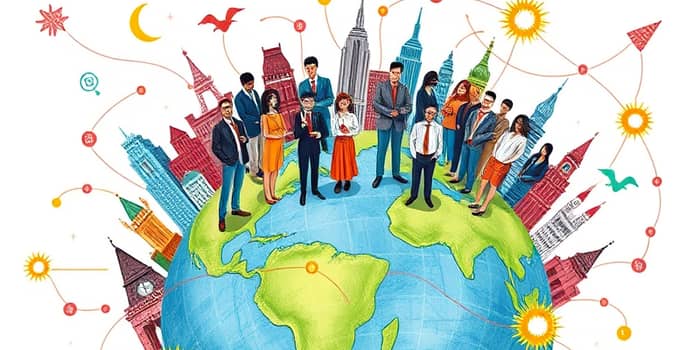
In an era defined by volatility and rapid change, developing resilience has never been more crucial. Embedding international exposure into personal and organizational strategies unlocks adaptability, creativity, and strength.
International exposure refers to the deliberate engagement with foreign cultures, markets, and professional environments. This might involve study abroad programs, cross-border internships, global partnerships, or overseas assignments. Resilience, on the other hand, is the capacity to withstand disruption, recover quickly, and emerge stronger.
By weaving global experiences into daily practices, individuals and organizations cultivate a reservoir of skills and networks that become invaluable when confronting challenges.
Robust data links global exposure to superior outcomes. A European Commission study reports that 92% of students who studied abroad secure employment upon graduation.
Further surveys reveal that 70% of participants cite improved intercultural skills, including adaptability, self-awareness, and confidence. Networking advantages are equally striking: up to 85% of jobs are obtained through professional connections.
On the corporate front, firms with foreign operations were about 10 percentage points more likely to deploy resilient strategies during the Covid-19 crisis, maintaining productivity and avoiding drastic workforce reductions.
Understanding the pathways through which international exposure builds resilience helps tailor effective programs.
These mechanisms operate at individual, organizational, and systemic levels, ensuring that resilience becomes a shared asset rather than an isolated trait.
Satya Nadella, CEO of Microsoft, often credits his international upbringing for his leadership style. His ability to guide Microsoft through major strategic shifts reflects a global mindset forged by diverse experiences.
The World Economic Forum’s Global Shapers Community unites young leaders worldwide to tackle pressing issues. Participants report enhanced problem-solving skills and access to a resilient support network when facing local crises.
Educational institutions are also innovating. Universities integrate cross-border internships, study tours, and virtual collaborations to ensure students graduate with both technical knowledge and a resilient outlook.
Forward-thinking firms recognize that international linkages strengthen crisis preparedness. They invest in rotational programs, global project teams, and cultural training to embed resilience across their workforce.
On the policy front, governments and multilateral bodies are developing resilience metrics alongside traditional GDP measurements. The UN Global Assessment Report now includes indicators for global connectivity and adaptive capacity.
These frameworks encourage investment in international partnerships, cross-border education, and mobility schemes that bolster national and regional resilience.
Putting theory into practice requires targeted actions. The following steps provide a roadmap for individuals, organizations, and educators:
Additionally, all stakeholders should track resilience metrics such as network diversity, crisis response time, and adaptability scores to measure progress.
Embedding international exposure is not merely a trend; it is a strategic imperative. By embracing global experiences, individuals sharpen their adaptability, organizations secure redundancy and innovation, and societies cultivate a resilient future.
Now is the time to weave international exposure into educational curricula, corporate strategies, and personal development plans. The world’s challenges will not wait—resilience forged through global engagement is the key to thriving amid uncertainty.
References













